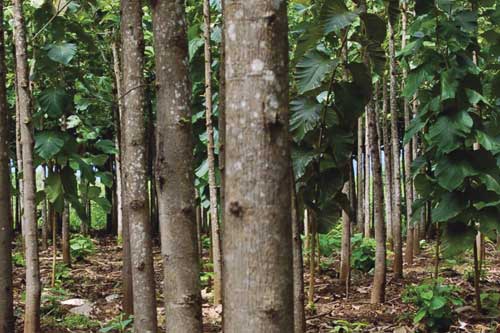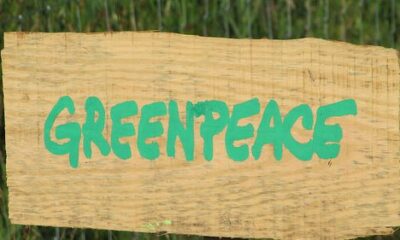

Environment
Improving Legality Among Small-Scale Forest Enterprises
Driven by the UN Sustainable Development Goals, establishing a framework of national-level indicators could provide an effective way of establishing a legal and sustainable small-scale forest sector.
In many developing countries small and medium-sized forest enterprises (SMFEs) play a crucial role in rural economies. Accounting for over 50% of the forest sector workforce, and the bulk of timber production, they support hundreds of thousands of livelihoods.However, most of this activity takes place outside the formal sector, or to put it more starkly, it is illegal. With poorly designed legal and policy frameworks and a lack of political and financial support, these informal operations are often associated with poor labour standards, out-of-date technology, weak management systems and unsustainable use of resources. Which reduces their potential to make a positive contribution to sustainable development. Despite this, evidence from around the world shows a well-supported small-scale forest sector can bring positive social, economic and environmental impacts.
Presenting very different ecological, socio-political and economic contexts, case studies in Brazil, Ghana, Indonesia and Laos highlight the diverse nature of SMFEs but they share many of the same challenges. The policy and institutional framework often presents considerable difficulties. The law may be unclear as to what procedures need to be followed to obtain land tenure or use rights, a situation that also creates a window for corruption to flourish. The requirements may be technically demanding, costly and time-consuming, often because the legal framework was created for large-scale timber companies in mind. In Brazil, Laos and Indonesia many smallholders struggle with complex and expensive verification systems, putting legal timber production, and potential for extra revenue, out of their reach. The growing demand for legality verification to supply the European and US markets has also increased bureaucratic requirements and costs.
Enforcement agencies in all the countries reviewed are under-resourced, and their efforts further undermined by rampant corruption. Smallholders are often those least able to stand up to pressure to engage in illegal or corrupt activities. In 2010 it is estimated profits from illegal chainsaw logging in Ghana stood at $26 million while informal payments and bribes, at least half of which were paid to officials, amounted to $24 million. In contexts such as this, achieving reform will not only require political drive for the sector, but also changing the incentives in place for the status quo. Creating a demand for legal timber on the domestic market will also help. SMFEs usually supply the bulk of their products to local markets where there is often little demand for legal timber, as it tends to be more expensive.
Improvements to the technical assistance and support services available to the sector and establishing associations, platforms and networks amongst SMFEs will also be beneficial. In Brazil, extensive support services for smallholders have been provided in some parts of the country, and by forming forest enterprises families have been able to collaborate and share costs to form financially viable businesses. In Ghana the National Board for Small-scale Industry, Business Advisory Centres and Rural Technology Facilities have empowered trade organisations, strengthened small enterprises and improved skills and access to technology.
Despite some successful initiatives, looking across the four countries reviewed, progress with improving legality amongst the small-scale sector has been slow. However, by making a convincing case for the role that SMFEs can play in sustainable rural development, governments can utilise the sector to help combat the growing challenges of climate change, environmental degradation and social change.
The UN Sustainable Development Goals (SDGs) could provide increased support for the small-scale forest sector as many of the goals apply directly to SMFEs. These include ending poverty and hunger, promoting sustainable economic growth, jobs and sustainable production and consumption patterns, as well as taking action against climate change and protecting terrestrial ecosystems. By bringing attention to the sector and increasing availability of resources, they could help shift some of the incentives, particularly for governments, that have meant smaller forest operators have often been neglected in many countries.
The process has changed in many cultures. A growing number of communities are using chainsaw logging to harvest trees more efficiently.
Progress of the SDGs will be measured through a set of global indicators and countries can also implement their own national-level indicators. Developing small-scale forest sector specific indicators could play a big role in establishing sustainable economies and contribute to each country’s ability to fulfill the SDGs. These sector specific indicators could relate to security of tenure; existence of a clear and appropriate legal and policy framework; availability of technical and administrative assistance; good physical infrastructure, access to information and finance, and access to a market. They could also include: the size of the sector, level of formality, contribution to overall timber production and to the economy.
Identifying indicators within a particular country context will require the involvement of SMFEs and other stakeholders engaged throughout the forest sector supply chain, as well as policy makers and statisticians. The Voluntary Partnership Agreements set up in some countries could be a good basis on which to build. With very little information available on the small-scale forestry sector in the vast majority of countries, considerable investment will be needed in those agencies that can help to evaluate and monitor the state of the sector. However,with the provision of additional support under the SDG framework, good statistical and monitoring agencies can contribute towards developing a thriving, legal and sustainable small-scale forest sector.


 Features9 months ago
Features9 months agoWhat is the Eco-Friendliest Option to Wash Your Dishes?

 Environment12 months ago
Environment12 months agoBuilding a Career in Green Construction: Tips and Insights

 News11 months ago
News11 months ago5 Ways Fleet Maintenance Software Can Help Businesses Be More Eco-Friendly

 Features10 months ago
Features10 months agoAddressing Pressing Ethical Concerns with Crypto Exchanges





























